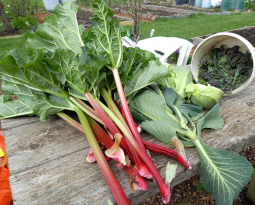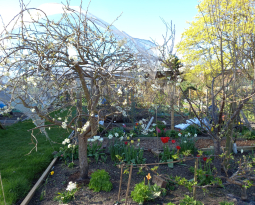What is wrong with my apple?
If you have been keeping an eye on The Caley social media this week you may have seen lots of apple related posts including three Saughton Apple Parade videos; eating apples, dual purpose apples and cooking apples all being grown at Saughton. (Follow each link to see video.)
But at apple day events we get asked a lot of questions about problems so this post tries to cover the four most common problems.
Common Problem 1: Bitter pit
- Dark spots on apples spread throughout the flesh and can develop a bitter taste.
- If the brown patches only occur near the skin this can be peeled, and it will not affect the taste.
- Summer pruning helps (not heavy pruning) to reduce the leaf coverage thus helping to control the vigour of the tree and help its ability to take up water (and calcium).
Common Problem 2: Apple Scab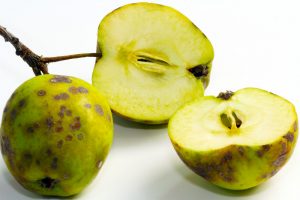
- Dark, scabby lesions appear as the fruit matures.
- This is a fungus that spreads by airborne spores. It is worse in areas with high rainfall and in wet summers and survives the winter on fallen leaves.
- Light attacks only damage the skin. Eating quality is hardly affected, if at all.
- Remove all leaves from under the tree and destroy. (Do not add to compost.)
Common Problem 3: Apple Sawfly
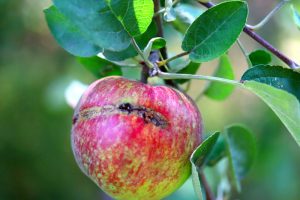
- Small larvae tunnel into, or graze just beneath the surface usually around the stalk end, of fruitlets (late spring to early summer) causing fruitlets to drop.
- Some desert varieties are highly susceptible.
- Don’t panic! An element of fruit drop can help thin the crop. Any that do stay on the tree to maturity are usually fine to eat even if scarred.
Common Problem 4: Codling Moth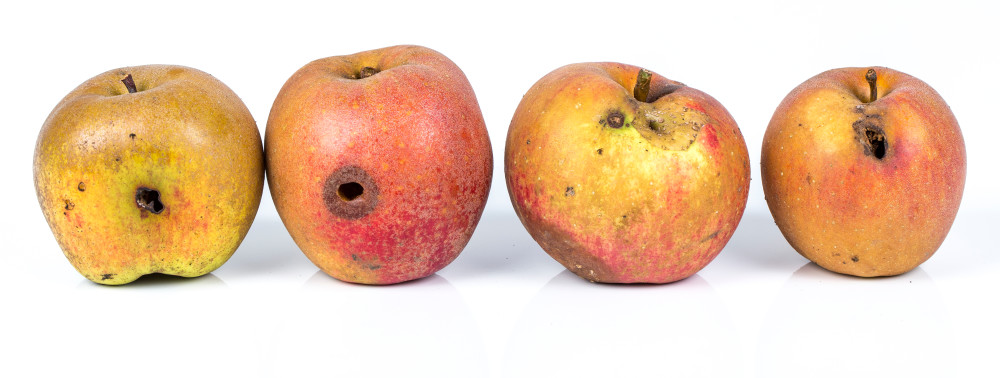
- Codling moth is particularly common in the south, west and midlands of England rather than Scotland –but it is also in Scotland.
- The codling-moth larvae burrows into the core of immature apples but occurs later than saw-fly damage.
- A large proportion of the flesh can be eaten away and the cavity filled with brown frass. It does not usually spoil the fruit completely and the undamaged part of the fruit can be eaten. However, the damaged areas are prone to rotting so fruit cannot be stored.
Recent Posts




